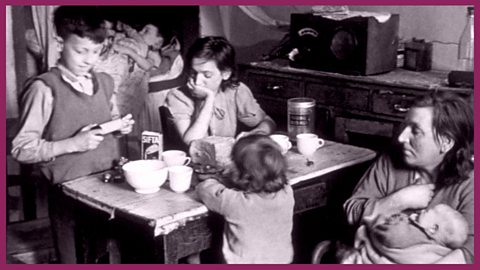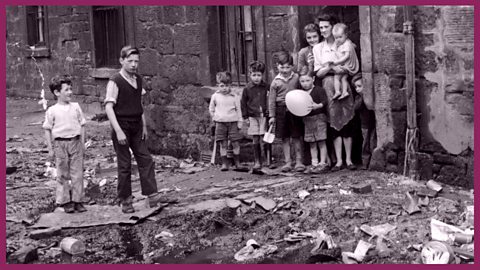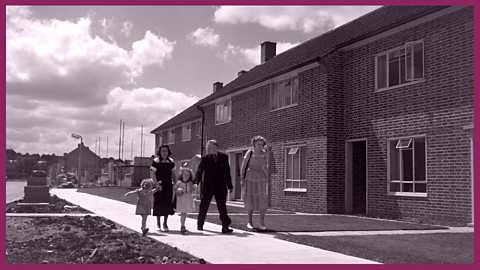Conditions here are disgusting. The building is falling to pieces. The rats, they're all over the place, they have eaten the children's clothes. My own daughter, she had her clothes so badly eaten. The lavatory for about the past 6 months, 60 people have been forced to use the one lavatory, because the other one that we're supposed to use has never been repaired. You sit in your home, you can't light a fire in this weather for smoke, the chimneys are blocked, it comes belching down. It's really something disgusting to have to live in such…in what we are forced to call home.
After World War 2, the mainly Victorian accommodation of Glasgow and many other UK cities posed serious problems, including overcrowding, lack of sanitation and a poor state of repair. In 1945 around one seventh of the population of Scotland lived in just three square miles of the city centre of Glasgow, leading to serious over-crowding. Living in slum conditions led to poor health and in 1950 Glasgow had the highest mortality rate from tuberculosis in Europe. In 1951 more than half of Glasgow households lived in one- or two-roomed accommodation without bathrooms, kitchens or electricity. The situation was similar in many other large UK cities.
Plans were proposed in the 1950s to clear the slums and re-house people in modern high-rise blocks, purpose-built estates on the outskirts of the city, or in New Towns. Many of the tenement blocks of the Gorbals area of Glasgow, where the photographs for these clips were taken, were demolished in the 1950s.
The new homes were very different from the city tenements. They offered running water and separate bedrooms and a better standard of living, although larger families, the unemployed or sick were often left behind in condemned accommodation.
The image in the video content shows a woman pointing out problems with her building, pictured in 1948.
Play next
1953: Slum living conditions 1. video
The mother of a large family describes how they all go to bed in their single room home

1953: Slum living conditions 3. video
A mother describes the filthy location she and her children are forced to live in.

Living in Crawley (New Town) video
A young girl describes her feeling at moving to the new town of Crawley to live.
